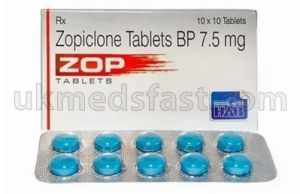The pain, swelling, and, in some situations, severe discomfort that come with a dental emergency can be terrible. Understanding the difference between a minor dental problem and a dental emergency can save your teeth and spare you unnecessary pain.
Dental emergencies can be very unpleasant, but if they are not handled quickly, they can also have a negative effect on your oral and overall health. Learn here how to recognize a dental emergency as well as what to do if one arises. If you face such a problem, always seek emergency dental care from available clinics in Coconut Creek, Florida.

When is it necessary to have emergency dental care?
The Centers for Disease Control and Prevention (CDC) report that over forty percent of adult Americans have had pain in their teeth. When something is wrong, pain often serves as the body’s first warning. It is essential to recognize when a discomfort requires immediate treatment and when it will pass until your next visit in order to avoid additional dental issues and associated health issues. The most common dental emergencies are listed below:
Sudden, unexplained tooth pain
When tooth pain comes out of the blue, there is likely a problem with one of the teeth, the gums around it, or perhaps the root. It is recommended that you see a dentist as soon as possible. You can consider the following method to decrease the pain:
- OTC pain relievers
- Cold compress
- Salt water gargle
Gum tissue bleeding and swelling
If you are not a regular flosser, you might notice bleeding while flossing until the gums become used to it. But if the gums start bleeding for no apparent reason, it is not normal. You should go for emergency dental care soon. This is particularly dangerous if the bleeding is followed by edema or pain.
Unexplained swelling of the jaw or mouth.
This is a red flag indicating that you need emergency dental care immediately. This could indicate an infection, a problem with the lymphatic system, or other issues that require emergency dental care.
Exposed nerves in the gum
An exposed nerve is going to be very painful. Delays will only make the situation worse. Visiting an emergency dentist helps prevent more nerve damage, infection, and more complicated treatments.
Tooth falling out
As an adult, losing a tooth—whether by force or not—is always a reason for concern. For the best chance of a successful transplantation, you may have just a few hours to bring your tooth and yourself to a dentist (though 30 minutes is preferable), says the American Association of Endodontists. Make sure that you do the following steps in addition to visiting the dentist promptly:
- Never touch the base of the tooth; instead, pull it by its tip.
- Carefully rinse the teeth with water, being mindful not to scrub.
- Try putting the tooth back into the socket. Take your time; refrain from rushing it. If the tooth comes in, lightly close your mouth or lay a finger on it to hold it in place.
- The tooth should be maintained moist in its socket, on your face, or in a glass of milk (NEVER tap water).
- The sooner you contact the dentist, the better your chances of protecting the tooth.
What should you do if the bleeding from your oral injury does not stop?
Receiving the care of an emergency doctor or oral surgeon is recommended if the bleeding from dental injuries continues to worsen after gauze is administered for a few minutes or seconds. For treatment, visit a dental clinic in your area.
How can you cure a mouth infection?
The type of infection will determine the duration of treatment. The dentist will do a root canal to eliminate abnormal material, seal the tooth, and remove the source of pain if there is an infection in the pulp of the tooth. A filling will be applied by the dentist to repair damage to a chipped or broken tooth.









